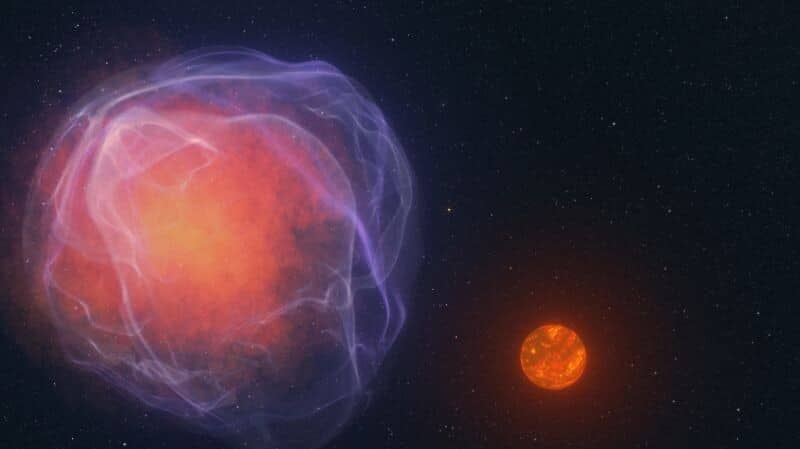
Strange object traveling at 600km/s through Milky Way baffles scientists
What's the story
Astronomers and citizen scientists have discovered an unusual object, potentially a faint red star, moving at an extraordinary speed through the Milky Way. The object is traveling at approximately 1.3 million miles per hour (600km per second), nearly three times faster than the Sun's orbit around our galaxy. This discovery was made by volunteers participating in a project called Backyard Worlds: Planet 9.
Hypervelocity star
A potential first in astronomical history
If confirmed, this object would be the first known "hypervelocity" very low-mass star. The term "hypervelocity" refers to stars that move so fast they could escape the gravitational pull of their galaxies. These stars were first theorized to exist in 1988 and discovered in 2005, making them an extremely rare phenomenon. The potential hypervelocity star has been named CWISE J124909.08+362116.0 or J1249+36 for short.
Citizen science
The discovery of J1249+36
The discovery of J1249+36 was made by citizen scientists involved in the Backyard Worlds project. They were analyzing images and data from NASA's Wide-field Infrared Survey Explorer mission, which mapped the sky in infrared light from 2009 to 2011. The star stood out due to its high speed, approximately 0.1% the speed of light. Martin Kabatnik, study's co-author expressed his excitement stating, "When I first saw how fast it was moving, I was convinced it must have been reported already."
Star classification
Telescopic observations confirm star's unusual nature
Follow-up observations from multiple telescopes confirmed the discovery of J1249+36. The star's low mass initially made it difficult to classify, leading astronomers to raise questions whether it was a low-mass star or a brown dwarf. Data from the W. M. Keck Observatory on Mauna Kea in Hawaii suggested that J1249 +36 was an L subdwarf, a star with much lower mass and temperature than the sun. These cool subdwarfs are among the oldest stars in our galaxy.
Galactic exit
Trajectory and potential exit from Milky Way
By combining data from several telescopes, astronomers determined J1249+36's position and velocity in space. This information allowed them to predict that it will eventually leave the Milky Way. However, questions remain about the true nature of this object. Roman Gerasimov, a postdoctoral research fellow at the University of Notre Dame, calculated its mass to be approximately 8% of that of the sun by comparing its observed properties to computer simulations of stellar evolution.
Speed theories
Theories on J1249+36's extraordinary speed
The research team proposed two possible scenarios for J1249+36's extraordinary speed. One theory suggests that it was a companion to a white dwarf star, which collapsed and exploded in a supernova, propelling J1249+36 into its current trajectory. Another possibility is that J1249+36 existed in a globular cluster, where black holes can form binary pairs that can catapult any stars that draw too near.